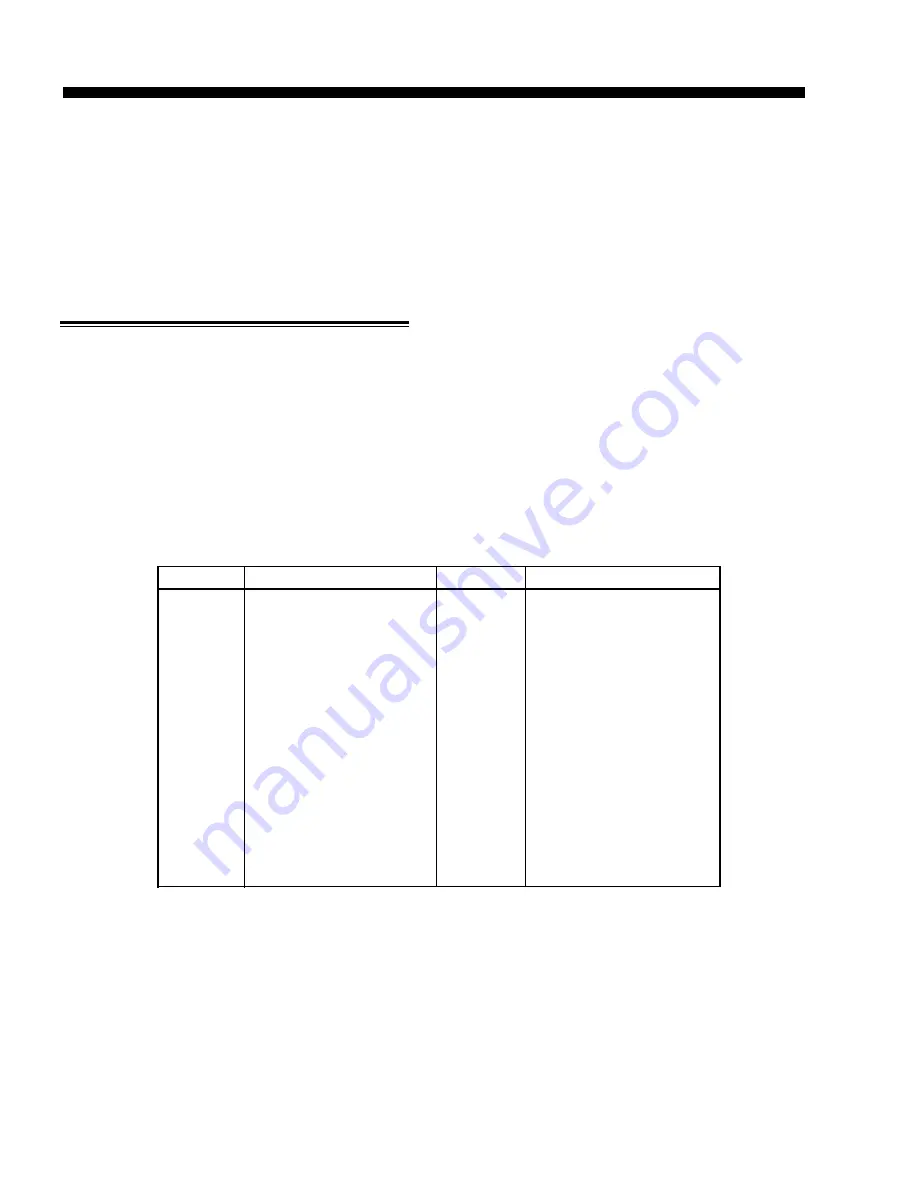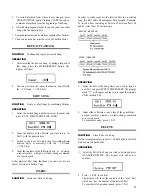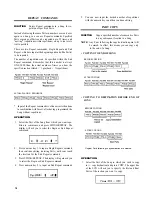
BASIC CONCEPTS AND FEATURES
The RX7 has so many features, it may seem a bit intimidating at first. On the other hand, when you hear the demonstration programs,
you will no doubt want to learn how to create complex accompaniment arrangements like that for your own music.
As with any instrument, a certain amount of practice (and theoretical knowledge) is necessary to enable freedom of expression.
However, once you understand the basic ideas, you will find it very easy to write sophisticated and highly realistic rhythm ar-
rangements with the RX7.
This section first introduces the major features, functions and possibilities of the RX7. The final chapter, AN EFFECTIVE AP-
PROACH TO WRITING, then tells you how to make use of them while referring to the appropriate sections in this Manual.
VOICES AND SEQUENCES
than any conventional drum machine, letting you add realism
and excitement.
The most basic distinction to make is between functions re-
lating to “voices” (= the instrument sounds themselves) and
those dealing with “sequences” (= rhythmical combinations
of notes).
The RX7 was conceived not only as a rhythm programmer,
but also as an advanced MIDI sound source which can be
played/programmed via MIDI keyboards and/or sequencers
as well as with its own keys. As such, it offers you much
more sound control over a far greater variety of instruments
At the same time. the RX7 gives you complete freedom in
combining these voices to form sequences. Even the finest
nuances of each single note in a rhythm pattern can be in-
dividually adjusted.
n
n
VOICES
In the tradition of Yamaha’s DX7 synthesizers, the 100 in-
dividual RX7 sounds are referred to as “voices” (used syn-
onymously with “instruments” in this manual). Each voice
has a number for easy access.
VOICE LIST
Voice No.
Type
00 - 08 Bass Drums
09 - 18 Snare Drums
19-20 Rim Shots
21-37 Toms
38 - 40 FM Percussion
41-44 Hi hats (open/closed)
45 - 48 Cymbals
49 - 52 Basses
53 - 56 Guitars*
57 - 59 DX7 Voices
60 Brass
61 Hand Claps
62 Timpani
63 Cowbell
64 Tambourine
65 Shaker
66 - 68 Congas
69 - 70 Bongos
Voice No.
Type
71 -72 Timbales
73 - 74 Agogos
75 Cuica
76 Castanet
77 Whistle
78 Claves
79 Bell Tree
80 Vibra Slap
81 Steel Drum
82 Glass Crash
83 Gunshot
84 Door Slam
85 Camera Shutter
86 Punch
87 Car Door Shutting
88 - 93 Human voices
94 - 99 Reversed sounds
The following abbreviations are used for voice names on the
LCD:
BD = Bass Drum, E. = Electric, F. = Fusion, H = High,
H. = Heavy, HH = Hi hat, HO = High Open, HM =
High Mute, J. = Jazz, L = Low, P. = Processed, prc =
percussion, Rvs = Reverse, SD = Snare Drum
Ex.: H. BD 1 = Heavy Bass Drum
*: D.GtrS = Distorted Guitar Single Note
D.Gtr5 = Distorted Guitar Open Fifths
GtrCutD = Guitar Cut/Downstroke
GtrCutU = Guitar Cut/Upstroke
You have total control over the level (volume), pitch, pan
(stereo position) and decay (length) of each voice, as well
as over effects including delay, detune, distortion, pitch bend,
vibrato, panned stereo echoes, etc..
Any voice can be assigned to and played by any Instrument
key on the RX7. You can create your own key layouts (“drum
sets”) and have the RX7 memorize up to five of them.
Initially, the following voices are assigned to the Instrument
keys 15:
(Four other preset layouts are available.)
3































